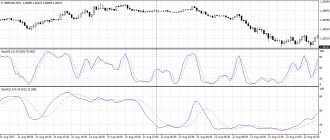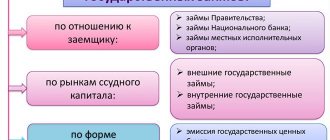Positional trading is trend trading on long time frames.
Position trading is usually carried out on the basis of fundamental analysis. This method of trading is used on almost all exchanges. Traders who use this style of trading keep both sell and buy trades open for a long time. Sell transactions make a profit when the price of an asset depreciates, which usually happens during times of economic/financial turmoil. This method of earning money brought many speculators considerable profits in 2008, when there was a sharp drop in prices in many markets.
What is position trading and how does it work?
Positional trading is a style of trading that seeks to maximize profits from long-term trends. Its essence is to catch the entire trend movement, without being distracted by possible corrections.
This type of trading has its pros and cons.
Pros:
- It requires less than 30 minutes a day.
- Suitable for those who have a full-time job.
- Much less stress compared to day trading and swing trading.
Minuses:
- You will often see part of your profits being eaten up by pullbacks.
- You can count on a maximum of 30-40% profit per year.
Long-term trading, its features and characteristics
The most popular timeframe for position trading is the D1 timeframe. If you open the daily chart, you can see that the trend does not reverse here often. And if you learn to correctly determine the direction of the main price movement, you can achieve impressive results.
Corrections and pullbacks should not be traded because they do not have a good risk-to-reward ratio.
Your analysis of the market situation should be based not only on technical analysis, but it is important to also use fundamental analysis. Because usually the charts unfold after the release of news data and the injection of large volumes.
One of the most important features of a position holding strategy is the choice of trading instrument.
If the instrument is volatile and has long-term directional movements, then it is ideal.
It is also necessary to check the seasonality of your asset in previous years. This test usually shows interesting patterns. Securities, metals and oil are best suited for trading, provided they meet the requirements listed above.
Long-term trading is similar to investing because the time it takes for your order to buy or sell is long. If we consider the main differences, we can highlight the presence of dividends on securities and the calculation of the results of profitability over many years in investing.
How to find the best trading opportunities in position trading?
It is best to enter a trend from its very inception at the breakout of long-term support or resistance lines or at the first retest of the level after the breakout.
If the price is within a long-term consolidation between support and resistance levels, it would be best to enter the trade as early as possible, that is, at the support itself.
When the price does break out of the range, breaking the resistance line, and goes up, it will absorb the stop losses of those who were buying. There will be a lot of such traders, because the consolidation was long, therefore, many expected another rebound from the level. Usually such breakdowns are sharp and rapid.
The more time the market has been moving in consolidation, the more difficult it will be for it to break out of the level and exit the range, but if such a breakout does occur, the subsequent trend will be very strong and long.
Retesting the level after the breakout will provide you with another good opportunity to enter the market along the trend. A strong breakout of the level is noticed by other traders, and many of them do not have the patience to wait for the price to roll back, so they enter a moving trend. The smart money is pushing the price down, taking out these traders' stops and absorbing their positions to gain more liquidity. Then the price flies up without any obstacles.
A Guide to Position Trading
Position trading is a common trading strategy in which a trader holds a position in a security for an extended period of time, usually months or years. Position trading strategies rely on traders ignoring short-term price movements in favor of making precise choices and profiting from long-term trends. This type of trading is most similar to investing, with the main difference being that buy-and-hold investors can only go long. Of all trading strategies, position trading covers the longest time period. Accordingly, there is greater potential for profit, but at the same time there is also increased risk.
The benefits of position trading include limited position maintenance, taking advantage of larger trends, and reducing market noise.
Selecting a trading asset
When choosing an asset/currency pair to open trades, you should consider the following factors:
Volatility We recommend choosing a highly active trading instrument so that daily SWAP does not eat up your profits. Choose an asset that is affected by both political and economic events. The main major pairs are suitable here; you can also use gold, oil and a number of major indices.
Margin
Position trading differs from most strategies in that for successful trading it is better to use a small amount of leverage. Here are the variables on which margin selection should be based:
- The volume of trading funds (in this case, trading is carried out only on risk capital), which is available outside of the personal account;
- Calculation of the best trade-off between risk and reward when determining leverage.
When trading, take into account money management: risks should not exceed 5-10% of your deposit.
There are types of trends that simply continue without "stopping" while other traders sit on the sidelines, waiting for a pullback, eager to get in on the market as well.
If you want to learn more, then welcome to position trading.
If this is something new to you, don't worry.
Because in today's post you will learn the following:
· What is positional trading and how does it work;
· Where to find the best opportunities for positional trading;
· How to determine the best time to enter the market as part of positional trading;
· How to correctly set a stop loss in positional trading;
What is position trading and how does it work?
Positional trading is a trading methodology whose goal is to catch a trend in the market.
The idea is to catch the “move itself” and exit the market only when the trend shows signs of reversal.
Here's what I mean:
Advantages and disadvantages of positional trading...
Advantages:
· Requires less than 30 minutes per day;
· This technique is suitable for those who work full time;
· Less stress compared to day trading.
Flaws:
· You will observe how your profitable positions often turn into unprofitable ones;
· You will have a low frequency of profitable positions (around 30-40%).
In my experience, the best time to enter the market is in the "early stages" of a trend..
1. Areas of support and resistance;
2. Breakout of the long-term range;
3. The first pullback is the best pullback.
1. Support and resistance areas will give you the opportunity to “buy the lows and sell the highs.”
A support area is an area on your chart where potential buying pressure could push the price higher.
A resistance area is an area on your chart where potential selling pressure could push the price lower.
An upward trend develops only after the level of the range highs is broken from the bottom up.
Thus, if you want to enter the market BEFORE price breaks out, you must do so while the market is still in a range.
And where is the best place to go long in a market that is trading in a range?
BREAKDOWN!
In the support area.
2. Long-Term Range Breakout Brings Stress to Your Trading
Here's the thing:
The market is constantly changing.
It goes from range state to trend state and back to range state.
And in my experience, the longer the market trades in a range, the more difficult it is to break through the boundaries of that range.
That's why…
When the market is in a range, traders will enter long positions at the support level and short positions at the resistance level.
And where will they place their stop loss orders?
Probably below the support level and above the resistance level.
Over time, this cluster of stop loss orders will increase in size as more traders trade near the highs and lows of the range.
But the market has to break through eventually.
Now let's say the market breaks up.
What's happening?
There are momentum traders, position traders, and trend traders who go long on a breakout.
There are also traders who opened short positions and had protective stops triggered near the resistance level, which further fuels further buying pressure.
What is the result?
All this leads to a strong breakout and the possible start of a new trend.
The point is this...
The longer the price trades in the range, the more difficult it is to break through.
3. The first pullback is the best pullback, and here's why...
A pullback is when the price temporarily moves against the trend and offers you an opportunity to enter the market.
In my experience, the best pullback is the first pullback after the breakout.
And that's why…
When the market is trading in a range, it must eventually break out of it.
And as you already know, the longer the range lasts, the more difficult it is to break through.
Thus, when the market finally breaks out of the range, traders who missed the move look forward to entering the market on the first pullback.
These pullbacks usually have shallow corrections, as few traders want to trade against strong momentum.
Therefore, you can buy the breakout of the swing high and jump into the trend.
How to determine the best time to enter the market as part of positional trading
For positional trading, you can use 2 methods of entering the market.
These include:
· False breakdown;
· Reduce volatility.
False breakout
This entry method provides benefits for breakout traders who are "trapped" and is suitable for trading support and resistance areas.
It works like this...
Breakout traders typically enter long positions when the highs are broken.
But what happens when the market breaks out from the bottom up and then turns around and goes lower?
Well, breakout traders are trapped because their long positions are in the red zone.
And if the market continues to decline, their stop losses will be triggered, which will further contribute to a further decline in the price.
Let's look at how a false breakout can serve as a trigger to enter the market.
Here is an example: false breakout of high levels
However, a false breakout is not an exact pattern as it has variations.
For example, it can manifest itself in the form of reversal candlestick patterns (hammer, shooting star, etc.).
If you want more information about this, read the Candlestick Patterns Guide.
Reducing volatility
This entry technique offers entry into a market environment with low volatility.
So when volatility moves in your favor, you can multiply your R profit ratio on your trade by increasing your position size (as long as you have a tight stop loss).
Apparently you are asking yourself:
“What does reducing volatility look like then?”
Well, it's a tight consolidation with small candles.
And you can open a long position at the moment when the market exits the low volatility zone.
How to set a stop loss correctly so that it doesn’t get triggered “too early”
One of the biggest mistakes you can make is placing a very HARD stop loss.
Because more often than not it will be triggered too early before the market starts moving in your favor.
This means that your analysis may be correct, but you will still end up losing money due to a very tightly placed stop loss.
Increase your stop loss size so you can counter the market noise.
Set your stop loss at a level at which your trading setups will no longer be relevant.
This means that if you go short on a head and shoulders pattern, your stop loss should be set at the level at which the chart pattern will be considered failed.
And if you go long at a support level, then your stop loss should be placed below the support level, because if the market reaches it, then the support level will most likely be broken.
But I don't recommend placing your stops just below the support level or just above the resistance level because you will have a high chance of it getting triggered easily.
Instead, give the price some “buffer zone” so that it has more room to breathe and work out your position.
As you can see, there is nothing complicated in position trading.
The difficulty lies not in the strategy, but in its execution - in the willingness to ride the trend while maintaining your profitable positions.
And if you want to take it one step further, you can improve this technique a little.
Conclusion
· Positional trading is a methodology whose goal is to trade on long-term trends;
· The best trading opportunities are support and resistance areas, long-term range breakout and first pullback;
· To determine the time to enter the market, you can use a false breakout and reduction in volatility;
How to find more accurate entry points?
You can use two techniques:
- False breakout.
- Low volatility consolidation.
A false breakout is based on the price moving beyond a level and returning back. This move traps many traders, and when the price falls back below the level, their stops begin to be triggered. Market makers gain liquidity from these breakout traders. Therefore, false breakouts will always be a good opportunity to enter a position during consolidation.
Low volatility consolidation is a range of candles with small body sizes. When the market breaks out of this consolidation, you can enter a buy position. The stop loss for this model will be very small. It can be placed behind the opposite level of consolidation.
The idea behind the strategy
Surely you have noticed those long trends on the H4 and D1 charts, which sometimes last for many months. It seemed that it was possible to take a huge number of points - buy and wait. However, not everything is so simple - corrective movements drive traders out of the market.
This strategy is precisely aimed at taking those big movements. Some balance has been found here between sensitivity to input and its significance. And this line, as we see from monitoring real accounts, is chosen very competently.
What is the best stop loss to use?
Position trading doesn't like small stop losses because they will get hit often. You will have to increase the size of your stop to prevent it from being accidentally blown out by market noise. The stop loss should be placed in a place where it will be clear that you have made a mistake with the direction of the market.
For example, if you are trading a head and shoulders pattern, your stops should be placed in a place where it is clear that the pattern will no longer make sense if the price reaches that place on the chart. If you are entering a position from a support level, your stop should be placed at a place where it is abundantly clear that the support line has been finally broken.
When you place a stop, always leave some buffer for the price, giving it room to breathe.
If you don't know which buffer to use, use 1 ATR.
TRADING STYLE
Without a doubt, position trading is not as morally challenging as day trading. If you trade intraday, you are constantly forced to keep your finger on the pulse.
The trader faces a choice not only in terms of trading style, but also from the position of assets, and we often forget about how interesting CFD trading is!
You are faced with market noise that provokes you to take rash actions. In the case of positioning, you just wait, stubbornly wait for quality entry points and don’t do anything unnecessary!
Your main task as a position trader is to find a good trend that has recently started and competently join it. After which you place a stop and take, which must be several times larger than the stop. And that’s it, essentially, your role in the deal is over.
After the price moves a certain distance in your direction and if you are mentally struggling, you can move the transaction to breakeven or close part of the position. But to take the trade to breakeven, the price must travel a distance in your direction that is at least 2 times greater than your stop.
For example, if you set a stop of 30 points, and the price moved in your direction, say 15 points, then there is no point in transferring it to breakeven, since you will be stupidly blown away. In this case, it makes sense to transfer the transaction to breakeven after the price moves 30-70 points in your direction.
Trailing stop will allow you to take maximum profit
If you want to profit from the entire trend, you must use a trailing stop in your trading. This gives us the opportunity not to limit profits.
You can use two methods to trail a stop:
- ATR indicator.
- Moving averages.
The ATR indicator measures the volatility of price movements over a certain period of time. Therefore, you can use the ATR multiplier to choose where to place your stop.
Moving averages are an indicator that follows a trend, averaging its value. Therefore, a good place for a stop loss would be to place it behind the moving average line.
Which moving average period should you choose? If you are in a trend for the maximum amount of time without fear of deep pullbacks, try using moving averages with a longer period.
Let's look at how these market participants differ:
- medium term trader . Transactions of these market participants last from 3–4 days to 2–3 weeks (sometimes a month). Their profits are based on trends that are displayed on H1, H4 and D1 charts;
- short-term investor . Such medium-term traders consider their positions from 1 - 1.5 weeks to 3 - 4 months. Their graphs are level W1-W2;
- long term investor . A position trader of this level works with time intervals from 1 – 2 months to several years. They look at MN level graphs.
A position trader uses primarily fundamental analysis in his strategy. It takes into account economic (statistical) data and the political situation in the countries whose currencies or shares it considers for its trading. Position traders rarely use technical analysis, but they try not to completely abandon it.
Trading strategy for position trading
We already have all the components of a good strategy:
- We expect long-term consolidation.
- We enter at a breakout of the level. You can also enter even earlier, from the support line.
- The stop loss is set at 1 ATR from the breakout level.
- We tighten the stop loss behind the price at 50 MA.
The position trading strategy applies to higher time frames, but who says you can't use it on lower time frames too? All the same setups and entry points can be found on hourly, fifteen-minute and even five-minute charts. However, the smaller the time frame you choose, the shorter the duration of the trend you can capture.
Let's conclude
If you are just starting out in trading, the right decision is to study different markets and try different strategies. You may find an instrument whose dynamics you understand better than others.
Don't be afraid to try and make mistakes ! The more mistakes you make at the initial stage, the faster you will gain the necessary experience. It is worth remembering, of course, that you can only risk those funds, the loss of which will not have a critical impact on your financial situation.
Let us also recall that we have already considered the scalping strategy and intraday trading. Good luck and trade responsibly!
Examples
First of all, we note the appearance of a full sun with a red frame - a signal to sell. Next, we look at the slope of the channel. The channel is inclined downwards, that is, in the direction of our transaction. Next, we wait until the $hah indicator turns red and SSRC goes into the overbought zone (rises above zero). As soon as these conditions are met, we move to D1.
The last full sun on D1 should coincide with the direction of our trade. If the condition is met, we enter the deal with two orders.
To set a stop loss, we return to H4. We place a stop behind the nearest main fractal (full sun) of the same direction (not counting the signal one).
To close the first transaction, we need to meet 3 conditions: the appearance of an opposite fractal (complete or not); $hah repainted green; SSRC is in oversold zone. After closing the first order, we transfer the second one to breakeven.
We close the second trade when full sun appears on the H4, D1, W1 and MN timeframes. That is, the last full sun on all indicated TFs should be opposite to the direction of our position.
Otherwise, we close the deal on the opposite signal. That is, first we check the coincidence of the conditions on the H4 graph.
Then the presence of full sun on D1.
Setting a Strategy
Now let's move directly to the system itself. Installation is carried out in the standard way. First, open the terminal data directory via File – Open Data Directory. Move the No Stress.tpl template file to the templates folder. Indicator files – to the MQL4 – Indicators folder, and restart the terminal. After that, select the No Stress template from the list.
In total, the template consists of 6 tools:
- The NB-channel indicator builds a channel based on the latest price extremes. We will use this indicator to determine the direction of the trend;
- FL11 – indicator of non-standard fractals. It gives signals in the form of yellow circles with a red or blue frame - we will call them a full sun. The remaining fractals (without framing) are less significant, but will also be used;
- The next indicator is $hah. Everything is simple here - when the signal is green, we will determine purchases, and when the signal is red, we will determine sales;
- Finally, the SSRC oscillator. In it we will look at overbought/oversold zones. That is, when the line is above zero, we will sell, when below, we will buy;
- The chart also contains elements from the ProTrader auxiliary advisor. The author of TS uses the panel to set stop losses;
- In the lower right corner of the chart there is a small window with the spread and recommended lot.











